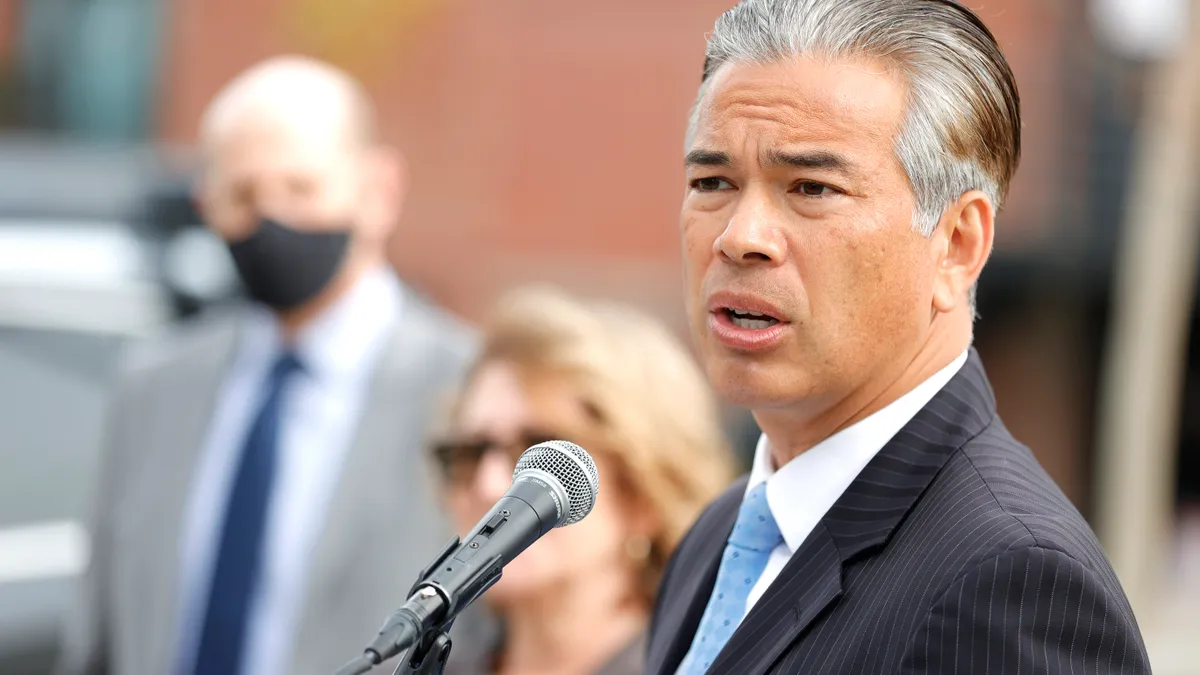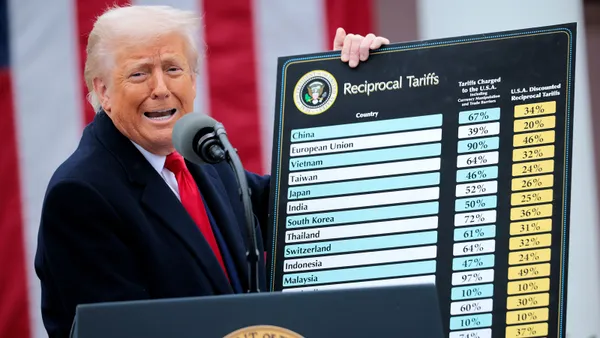Dive Brief:
- Restaurants in California will be required to include all mandatory fees or charges in the price of a good, starting on July 1, meaning restaurants would have to include the service fees associated with each menu item in the price of the item, according to a statement and an FAQ published by the California Attorney General’s office on Wednesday.
- The law does not bar businesses from charging fees, but does mandate that “the posted price must include the full amount that a consumer must pay for that good or service,” including fees which are mandatory, like service charges.
- Delivery fees are slightly more complex. Because first-party delivery is a service separate from a menu item, restaurants aren’t required to disclose a first-party delivery fee in the pricing for a takeout item. Third-party delivery services, meanwhile, “must advertise the full, all-in price of the delivery service” when stating the service price, rather than concealing fees for later in the transaction, according to the FAQ.
Dive Insight:
In addition to listing all item fees, restaurants are barred under the new regulation from listing a price and then noting that a percentage fee will be applied later.
“The price listed to the consumer must be the full price that the consumer is required to pay,” the FAQ states.
The law “has no effect on prices; the law does not ask businesses to charge less, the law does not require businesses to charge more. The Honest Pricing Law works to empower consumers by arming them with accurate information upfront,” the California AG office said in a press release.
The law does not prevent restaurants from imposing service fees, so long as those fees are either included in the prices listed for goods or are for optional services.
“The listed or advertised price must include all mandatory charges,” the FAQ states. However, “a business is free to provide a subsequent breakdown of the business’s intended use of the various fees.”
The regulation makes it more difficult for restaurants to obscure price increases by framing such increases as service fees or fees intended to pay for specific costs or worker benefits.
Such fees are an increasingly common tool for restaurants to offset increases in labor costs, especially in jurisdictions without the tipped sub-minimum wage. Unlike tips, the proceeds from service fees go directly to a business, rather than to workers, making service fees an especially clear example of the conflict between labor, business.
At the national level, business has been winning this conflict of late. Labor share, a measure of the total national output allocated to wages, has experienced an extended decline since 1947 and has remained depressed since The Great Recession, according to data published by the Federal Reserve Bank of St. Louis. A closer examination of labor share data from the Bureau of Labor Statistics reveals that it has fallen from 59% in Q2 2020, to 55.8% in Q1 of 2024. Such a drop in labor share of national output is a potential factor in driving organized labor’s political offensive in states like California and the shop floor militancy of unions like Starbucks Workers United and the reformed United Auto Workers.















